| Top Ten NYC Architecture | top ten New York Art Galleries and Libraries. | |||||||||||||||
| For a more complete list, see Museum,Gallery,Library etc. | ||||||||||||||||
| 1 | New York Public Library | |||||||||||||||
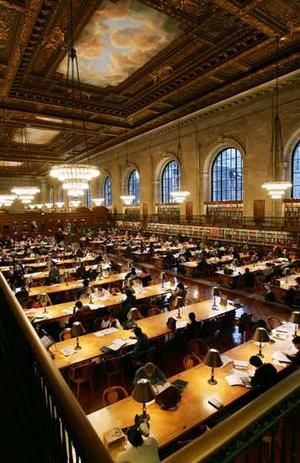 |
The New York Public Library (NYPL) is one of the leading public libraries of the world and is one of America's most significant research libraries. It is unusual in that it is composed of a very large circulating public library system combined with a very large non-lending research library system. It is simultaneously one of the largest public library systems in the United States and one of the largest research library systems in the world. It is a privately managed, nonprofit corporation with a public mission, operating with both private and public financing. Its flagship building, on Fifth Ave. running from 40th to 42nd Street in Manhattan, is a National Historic Landmark. The historian David McCullough has described the New York Public Library as one of the five most important libraries in America, the others being the Library of Congress, the Boston Public Library, and the university libraries of Harvard and Yale. Although it is called the "New York Public Library" the system does not cover all five boroughs of America's largest city, only Manhattan, The Bronx and Staten Island. New York City does not have a single public library system but three of them. The other two are the Brooklyn Public Library and the Queens Borough Public Library, serving the boroughs of Brooklyn and Queens, respectively. This came about because these three library systems predate the consolidation of New York City in 1898. |
|||||||||||||||
| 2 |
Pierpont Morgan Library |
|||||||||||||||
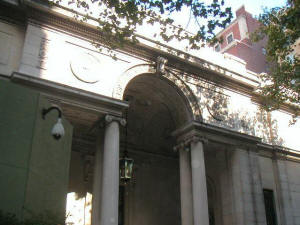 |
The Pierpont Morgan Library, an exquisite cultural treasure chest in Murray Hill, would reorient, expand and draw together its campus of historic buildings with three unmistakably modern steel-and-glass pavilions designed by Renzo Piano. The project is so ambitious it would require the Morgan to close for two years. |
|||||||||||||||
| 3 | Ottendorfer Branch, NY Public Library | |||||||||||||||
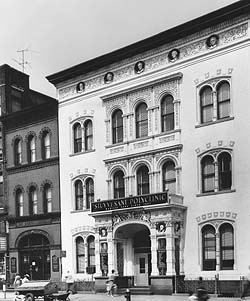 |
he Stuyvesant Polyclinic Hospital and the Ottendorfer Branch Library represent the philanthropy of Anna Ottendorfer, a 19th-century German immigrant and German language newspaper publisher dedicated to providing charitable support to New York's German immigrants. The design of these two adjoining buildings reflects a neo-Italian Renaissance style, while the ornate decorative elements symbolize Ottendorfer's efforts to promote a sense of ethnic pride. The goal of the library and clinic was, in the words of Mrs. Ottendorfer, dedicated to "uplifting both the body and mind of fellow Germans in the United States. |
|||||||||||||||
| 4 | Frick Collection | |||||||||||||||
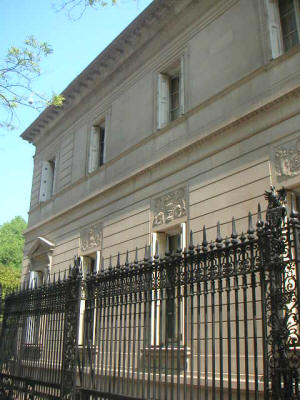 |
The Frick Collection is an elegant museum housed in a former mansion at 1 East 70th Street, in New York City. The collection consists of exceptional works from the Renaissance through the late nineteenth century. Included are some of the world's most celebrated Western artists, such as Constable, Goya, Manet, Monet, Rembrandt, Renoir, and Whistler. The Frick Collection is also the home to delicate French porcelains, Italian bronzes, sculptures, and period furniture. Tours are enhanced by Acoustiguide, which is available in six languages. Friday evenings the Frick will stay open until 9pm with a cash wine bar in the Garden Court. Children under 10 are not permitted and an adult must accompany children under 16. |
|||||||||||||||
| 5 |
Museum of Modern Art |
|||||||||||||||
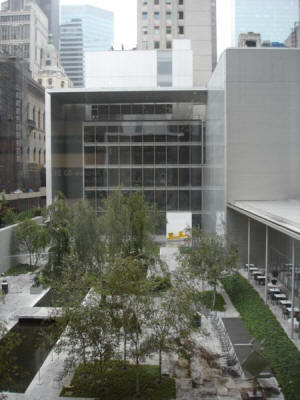 |
The Museum of Modern Art (MoMA) is a preeminent art museum located in Midtown Manhattan in New York City, USA, on 53rd Street, between Fifth and Sixth Avenues. It has been singularly important in developing and collecting modernist art, and is often identified as the most influential museum of modern art in the world.[1] The museum's collection offers an unparalleled overview of modern and contemporary art, [2] including works of architecture and design, drawings, painting, sculpture, photography, prints, illustrated books, film, and electronic media. MoMA's library and archives hold over 300,000 books, artist books, and periodicals, as well as individual files on more than 70,000 artists. The archives contain primary source material related to the history of modern and contemporary art. |
|||||||||||||||
| 6 | Solomon R. Guggenheim Museum | |||||||||||||||
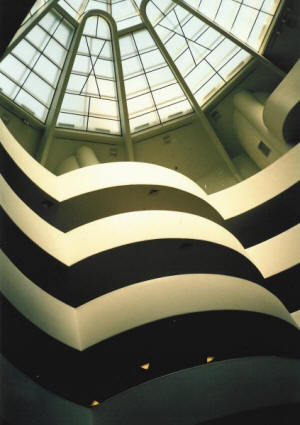 |
Originally called "The Museum of Non-Objective Painting," the Guggenheim was founded to showcase avant-garde art by early modernists such as Wassily Kandinsky and Piet Mondrian. It moved to its present location, at the corners of 89th Street and Fifth Avenue (overlooking Central Park), in 1959, when Frank Lloyd Wright's design for the site was completed. The distinctive building, Wright's last major work, instantly polarized architecture critics, though today it is widely revered. From the street, the building looks approximately like a white ribbon curled into a cylindrical stack, slightly wider at the top than the bottom. Its appearance is in sharp contrast to the more typically boxy Manhattan buildings that surround it, a fact relished by Wright who claimed that his museum would make the nearby Metropolitan Museum of Art "look like a Protestant barn." Internally, the viewing gallery forms a gentle spiral from the ground level up to the top of the building. Paintings are displayed along the walls of the spiral and also in viewing rooms found at stages along the way. |
|||||||||||||||
| 7 | Metropolitan Museum of Art | |||||||||||||||
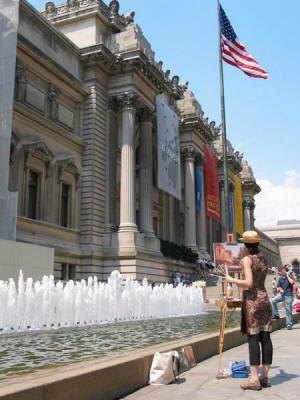 |
The Metropolitan Museum of Art, often referred to simply as "the Met", is one of the world's largest and most important art museums. The main building is located on the eastern edge of Central Park in New York City, New York, United States, along what is known as Museum Mile. It was designated a National Historic Landmark in 1986. The Met has a much smaller second location at "The Cloisters," featuring medieval art. |
|||||||||||||||
| 8 | ||||||||||||||||
| 9 | Whitney Museum of American Art | |||||||||||||||
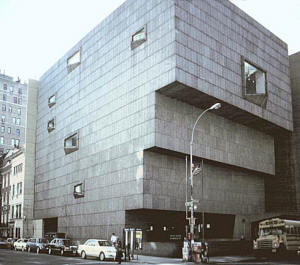 |
The Whitney Museum of American Art owes its striking granite presence at the southeast corner of Madison Avenue and 75th Street to the Hungarian-born, Bauhaus-trained architect Marcel Breuer (1902-1981). To design a third home for the Museum—which had gradually migrated northward from its original location on West 8th Street to West 54th Street—Breuer worked with Hamilton Smith, creating a strong modernist statement in a neighborhood of traditional limestone, brownstone, and brick row houses and postwar apartment buildings. Considered somber, heavy, and even brutal at the time of its completion in 1966 ("an inverted Babylonian ziggurat," according to one critic), Breuer's building is now recognized as daring, strong, and innovative. It has won landmark status, and has come to be identified with the Whitney's own uninhibited approach to twentieth-century art. |
|||||||||||||||
| 10 | American Folk Art Museum | |||||||||||||||
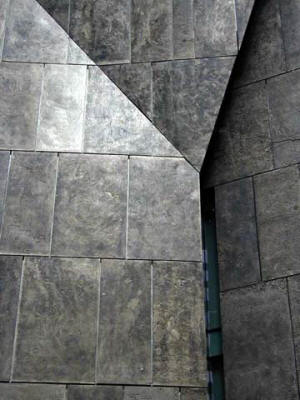 |
Intimate areas, reflecting the domestic scale of much of the museum's collection, allow for a personalized art experience. Open galleries feature spaces for the display of larger, more dramatic works. A unique cantilevered concrete stairway connects all levels of the building. Additional types of staircases not only provide varied paths of circulation between floors but also give visitors different visual experiences. Tod Williams Billie Tsien Architects have won numerous awards for the building—among others, an American Institute of Architects National Honor Award (in 2003); the World Architecture Awards for Best Building in the World, Best Public/Cultural Building in the World, and Best North American Building, as well as the New York City American Institute of Architects Design Award (all in 2003); and the Municipal Art Society New York City Masterwork Award (in 2001). |
|||||||||||||||